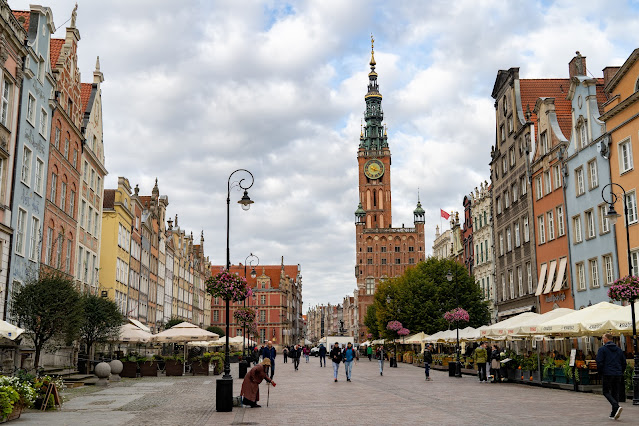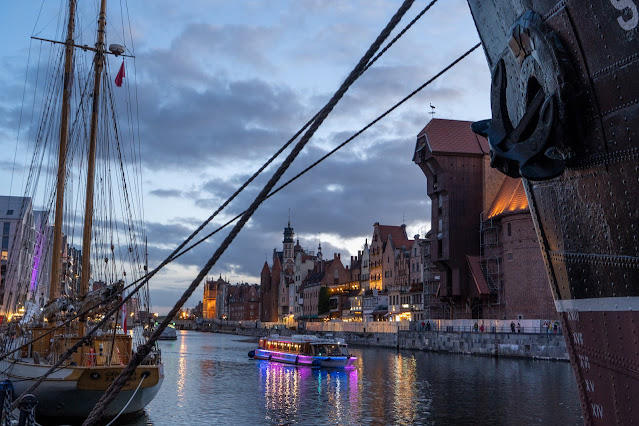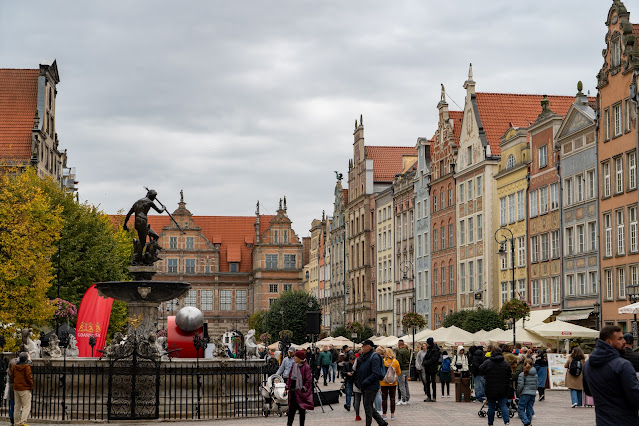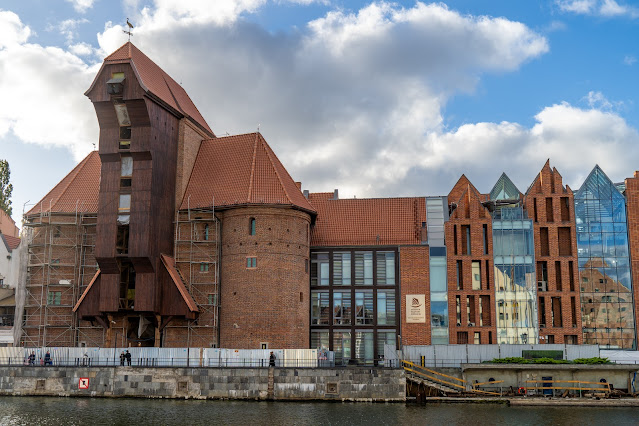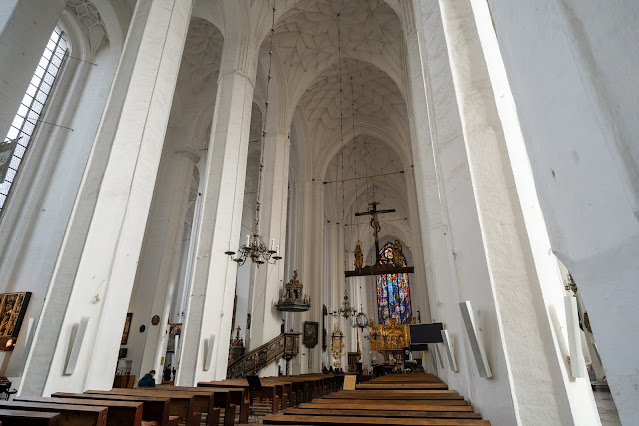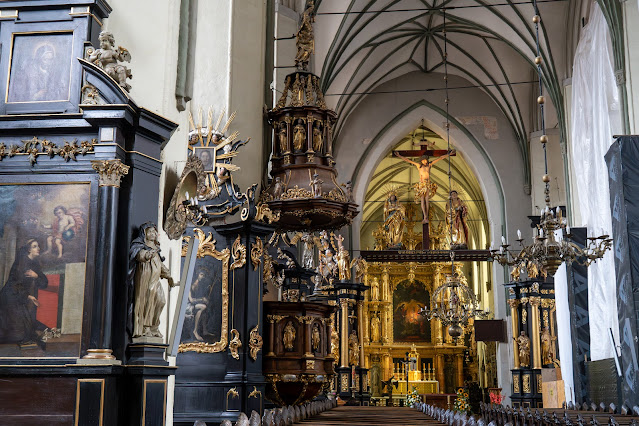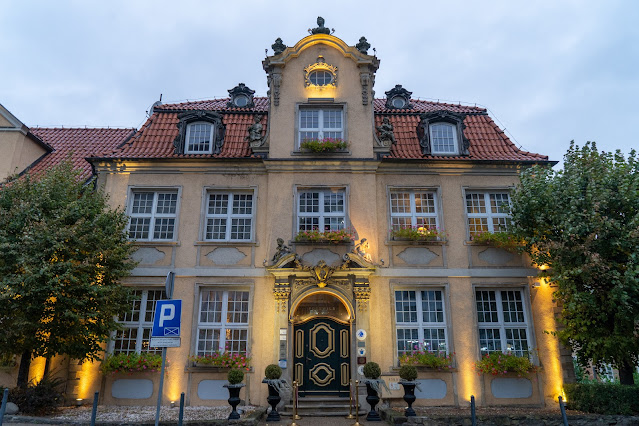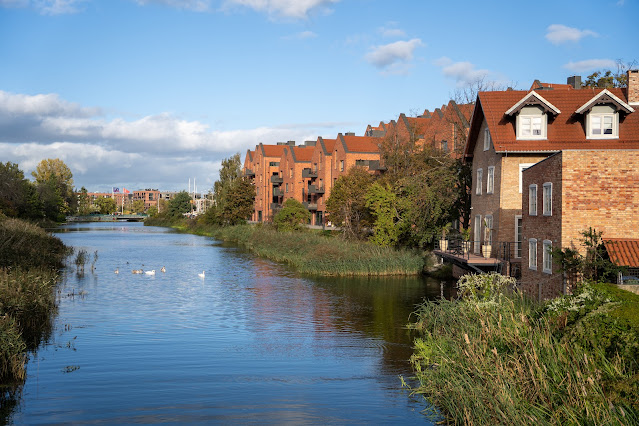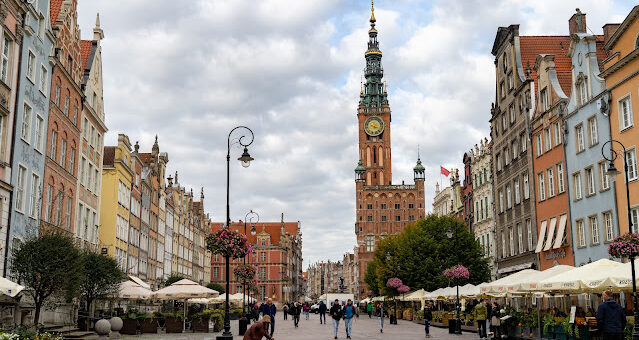
Gdańsk is a port city located on the Baltic coast, and the historic city center is divided by picturesque canals. But Gdańsk is more than just a pretty town. Gdańsk has been the center of multiple pivotal moments of Poland’s history. Gdańsk should be included in your trip to Poland both because it’s a beautiful city and because of how important it is to the country and its history.
A little about Gdańsk’s importance in Poland’s history
Poland was ‘liberated’ by the Soviet Union at the end of World War II and then was under Soviet control until 1989. The Solidarity movement that started in Gdańsk’s shipyards in the 1980s played a crucial role in bringing about the end of communist rule in Poland, which in turn contributed to the collapse of the Soviet Union.
What to do in Gdańsk
We arrived in Gdańsk by train from Warsaw, so we had the afternoon to explore before heading to dinner. After checking into our hotel, we walked along the water and viewed the Gdańsk Crane, which at the time was closed to the public for renovation. The port crane, a large wooden structure between two brick towers, is medieval technology built in the 15th century.
We continued on to the Museum of the Second World War which tells the story of the war that began in Gdańsk using artifacts, design, storytelling, and archival footage. It can take two to three hours to visit the museum and we highly recommend paying for the audio guide.
The next day was our one full day in Gdańsk. Our first stop was Uphagen House. The home was destroyed in World War II and is the only Gdańsk mansion rebuilt as it was before 1945.
We continued along the Royal Way and stopped in the old Post Office before visiting the Main Town Hall, which contains a Renaissance hall.
Artus Court is the only surviving original hall in Baltic Europe. A highlight here is the largest tile stove in Europe, covered in 530 colorful tiles of kings, almost all of which are original and survived World War II bombs.
If you’re planning on purchasing amber while in Poland, Mariacka Street is the best place to do so. Not only is Mariacka Street lined with shops and workshops where artisans create and sell amber jewelry and art, it also has beautiful architecture.
After purchasing some amber gifts, we visited St. Mary’s Church, the largest brick church in the world built from 1343 to 1502 by the Teutonic Knights.
We also visited St. Nicholas Church. This is the only Gdańsk church to survive World War II, which it is believed is because St. Nicholas is one of the cherished patron saints of Russian Orthodox.
We made a quick stop at the Market Hall because the basement contains graves of medieval Dominican monks, which can be viewed over a glass railing.
We visited two more churches that are close to each other. St. Catherine’s Church is the oldest church in Gdańsk. St. Bridget’s Church has an altar made entirely of amber.
We visited the Museum of Amber, which is located within the Great Mill building. Here you can learn about where amber comes from, see examples of amber with inclusions like insects, and see jewelry and art created with amber. You can spend as little or as much time as you want in this museum.
Our final stop was Solidarity Square and the European Solidarity Center. Solidarity Square contains the Monument of the Fallen Shipyard Workers, which commemorates the bloodiest strike that took place in December 1970. The European Solidarity Center is all about the end of communism and how the strike that started on August 14, 1980 ended communism in Poland. Be sure to use the included audio guide. There is an option to have a more condensed tour using the audio guide if you want to complete your visit in an hour.
Gdańsk restaurants
A trip to Poland should include lunch at a milk bar at least once. Milk bars, or bar mleczny in Polish, are cafeteria-style restaurants from the communist era. They were state-subsidized eateries that provided affordable and simple meals. Some of these milk bars still exist in Poland and serve hearty, traditional Polish dishes. In Gdańsk we ate lunch at Stagiewna Bar Mleczny.
On our first night, we had dinner at Gdański Bowke, which is a casual restaurant on the waterfront serving simple and good meals and live music.
On our second night, we had dinner at the fancier Restauracja Goldwasser, which has upper-floor seating overlooking the water.
Where to stay in Gdańsk
For our two nights in Gdańsk, we loved our stay at the historic Hotel Podewils. The manor house was built in 1728 by stonemason Krzystof Strzycki. We booked a premium deluxe room with views of the old town and Motlawa River. The hotel also serves a lovely breakfast in the morning.
Carving out a full day and two nights to visit Gdańsk was the right decision for our trip to Poland. Gdańsk feels small and intimate and old world and yet is also the location of pivotal points in Poland’s history. It is absolutely worth visiting Gdańsk.
We planned our trip using the Rick Steves Snapshot Kraków, Warsaw & Gdansk guide (affiliate link).
